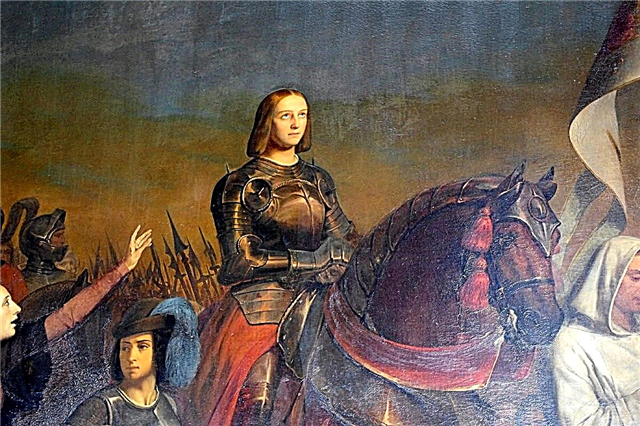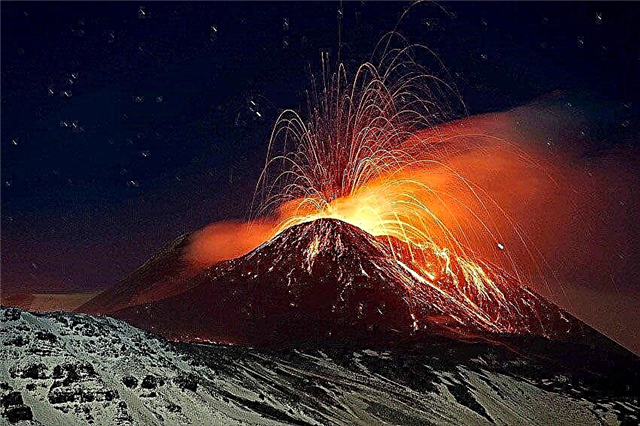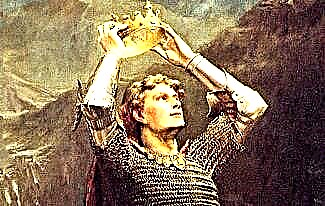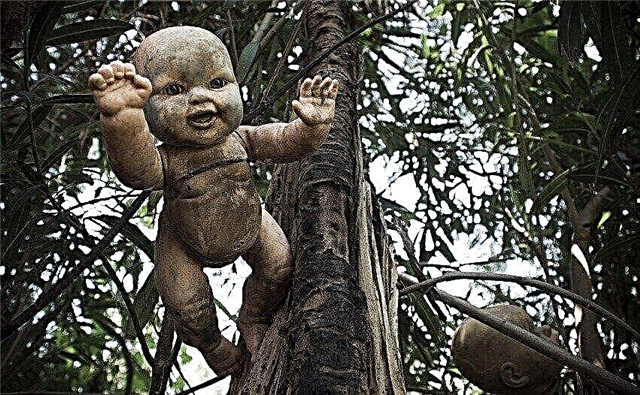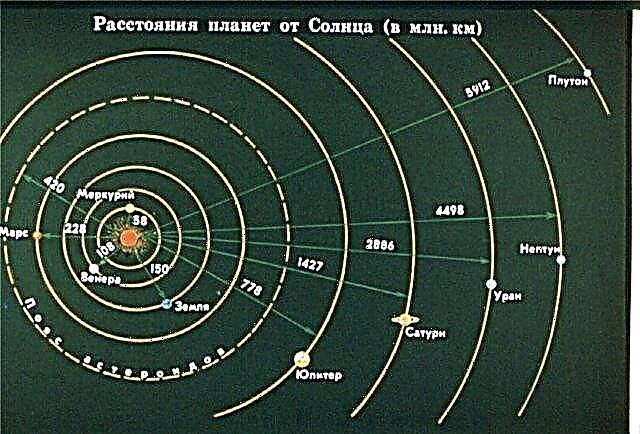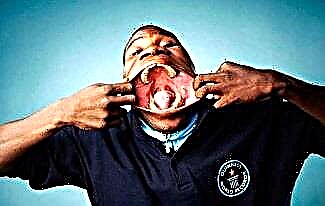Kim Il Sung (real name Kim Sung Joo; 1912-1994) - Korean revolutionary, statesman, political, military and party leader.
The founder of the North Korean state and its actual head in the period 1948-1994. The founder of North Korean state ideology is the Juche.

In 1953, Kim Il Sung was awarded the title of Marshal, and since 1992 - Generalissimo. The official title, both during life and after death: "Great Leader Comrade Kim Il Sung." A few years after his death, he was declared the "eternal president" of Korea.
There are many interesting facts in the biography of Kim Il Sung, which we will talk about in this article.
So, here is a short biography of Kim Il Sung.
Biography of Kim Il Sung
Kim Il Sung was born on April 15, 1912 in the small village of Namni, located near Pyongyang. It is worth noting that the biography of Kim Il Sung is shrouded in many myths, as a result of which it is not so easy to understand where the truth is and where the lie is.
Childhood and youth
According to the official version, Kim Sung Joo (aka Kim Il Sung) grew up in a poor family. His father, Kim Hyun Jik, worked as a teacher and also healed people with herbs using the methods of Far Eastern healers.
The mother of the future leader, Kang Bang Sok, was the daughter of a Protestant pastor.

For this reason, some sources claim that the Kim family adhered to biblical laws and principles.
According to North Korean historiography, Kim Il Sung's parents were among the leaders of the national liberation movement in Korea, occupied by Japan. When the boy was 8 years old, he and his family moved to China, where he went to the 1st grade.
After 6 years, Kim Il Sung's father died, whose health was seriously damaged by imprisonment in a Japanese prison. Soon the young man joined an underground Marxist circle.
When the authorities uncovered the Marxist organization in 1929, they arrested all of its members. As a result, Kim ended up in prison after spending about six months there.
When he was released, the guy headed a partisan detachment that fought against the Japanese invaders. It was during this period of his biography that he began to call himself Kim Il Sung, which meant - "The Rising Sun".
Politics and military career
Kim's military career developed at a very fast pace. When he was barely 22 years old, he was already in command of a separate division. Soon, his partisan formation was named "Kim Il Sung's division."
In the summer of 1937, the guy developed a plan to attack the Korean city of Pochonbo. His soldiers managed to liquidate the gendarme post and a number of Japanese institutions. Thanks to the successful operation, he gained a reputation as a talented strategist and tactician.
During the biography of 1940-1945. Kim Il Sung led the second branch of the 1st United People's Army. At that time, the Japanese were able to destroy many partisan detachments, as a result of which the Comintern (an organization uniting the communist parties of various states) invited the Korean and Chinese underground units to hide in the USSR.

In the spring of 1941, Kim Il Sung crossed the Chinese border with his army, after which he made several successful anti-Japanese operations. The next year he became a member of the Red Army (Workers 'and Peasants' Red Army). An interesting fact is that he decided to take the pseudonym "Comrade Jing Zhi-cheng".
Kim Il Sung was entrusted with command of the 1st Rifle Battalion and a separate Rifle Brigade, which consisted of Chinese and Korean guerrillas. Later, he met with the commander of the Soviet Red Army, Iosif Opanasenko.
At this meeting, the military leaders decided to found the United International Forces. It should be noted that this project was kept under strict secrecy. Kim Il Sung and his fighters were assigned to Khabarovsk.
The Korean leader's soldier was being trained for sabotage in Japan. When Japan announced its surrender, Kim Il Sung's detachment was disbanded, and he himself was offered the position of assistant commandant of Pyongyang.
In the fall of 1945, Kim made a solemn speech in Pyongyang dedicated to the victories and merits of the Soviet Army. On that day, Soviet General Ivan Chistyakov presented him as a "national hero." After that, the Korean began to rapidly climb the political ladder.
As a result of the Potsdam Conference in 1945, Korea was divided into 2 parts. Thus, the northern part came under the influence of the Soviet Union, and the southern part - the United States. In the late 1940s, Kim Il Sung headed the North Korean Bureau of the Communist Party of Korea, and then became the Chairman of the DPRK Cabinet.
North and South Korea had radically different views on further political development. This led to an escalation of the conflict, which turned into a military phase. According to a number of historians, it was decided to start a war during Kim Il Sung's visit to Russia in 1950.
The war between North and South Korea began on June 25, 1950, following a swift attack from the North Koreans. The conflict lasted for 3 years. At this time, the initiative passed to one side or the other.

A ceasefire between the fraternal peoples was proclaimed on July 27, 1953. Ultimately, North Korea, as before, remained under the influence of the USSR, and South Korea - the United States. An interesting fact is that a peace agreement has not yet been signed between the Koreans.
After 1953, the DPRK economy, supported by Russia and China, began to grow rapidly. The Tzan system progressed in the state, denying any forms of self-financing and material dependence. The country is being actively militarized, and any private economic activity is prosecuted.
The North Korean army is becoming one of the largest on the planet - over 1 million! During that period of his biography, Kim Il Sung was trying to get out of the influence of the USSR and China, but he did it very carefully, realizing that economic growth in the DPRK was impossible without the support of the "brotherly" countries.
In the early 1970s, the North Korean economy found itself in a state of stagnation, due to which the standard of living of citizens began to decline. The authorities have further strengthened ideological propaganda and control over all segments of the population.

In 1972, the post of prime minister was abolished in the state, and a new post, the President of the DPRK, was established to replace it. By that time, the personality cult of Kim Il Sung was unusually high, similar to that of Joseph Stalin in the USSR.
Back in 1949, the first monument was erected to Kim Il Sung, the number of which later began to rapidly increase. He was called the "Iron All-Conquering Commander" and the "Pledge of the Liberation of Mankind."
All Koreans were required to wear badges with a portrait of their leader. In the DPRK, monuments were erected exclusively to Kim Il Sung and his relatives. Interestingly, on his birthday, every Korean considered it necessary to lay flowers at one of the president's monuments.
The study of the biography of Kim Il Sung took place not only in educational institutions, but even in kindergartens. The leader's works and statements were learned by heart, and the children thanked the leader every day in songs for their happy childhood.
All places visited by Kim Il Sung were sure to be marked with memorial plaques. In addition, such places were declared a relic and were carefully guarded by the public.
The name of the "All-Conquering Commander" was mentioned in virtually any song, and the movie characters performed heroic deeds inspired by love for their leader. Today in the DPRK on the birthday of Kim Il Sung, Sun Day is solemnly celebrated.
Personal life
In 1935, Kim Il Sung met a simple girl named Kim Jong Suk. After 2 years, his chosen one became part of the Korean People's Army. The young people decided to get married in 1940.
Later in the Russian village of Vyatskoye, not far from Khabarovsk, the couple had a boy - Kim Jong Il. Some biographers claim that immediately after the birth of the child, they began to be called Yuri.

Kim Jong-suk passed away in childbirth on September 22, 1949 at the age of 31. After 3 years, Kim Il Sung remarried with the secretary Kim Sung Ae, but until the end of his life he spoke warmly of his first wife.
Children of Kim Il Sung: sons of Kim Jong Il, Kim Pyong Il, Kim Man Il and Kim Yong Il, daughters of Kim Gen Hee and Kim Kayong-jin.
Death
Kim Il Sung died on July 8, 1994 of a heart attack at the age of 82. For the past 10 years, he suffered from a tumor on his neck, which was carefully hidden under his clothes. Moreover, all photographs of the leader were taken so that the tumor zone was not visible on them.
After the death of the leader, mourning was declared in the DPRK, which lasted for 3 years! The next head of the country was the son of Kim Il Sung - Kim Jong Il. After death, the body of the deceased was placed in a glass sarcophagus so that people could see their idol.
Today anyone can visit Kumsusan - the mausoleum where the sarcophagus with Kim Il Sung is located.
Photo by Kim Il Sung








